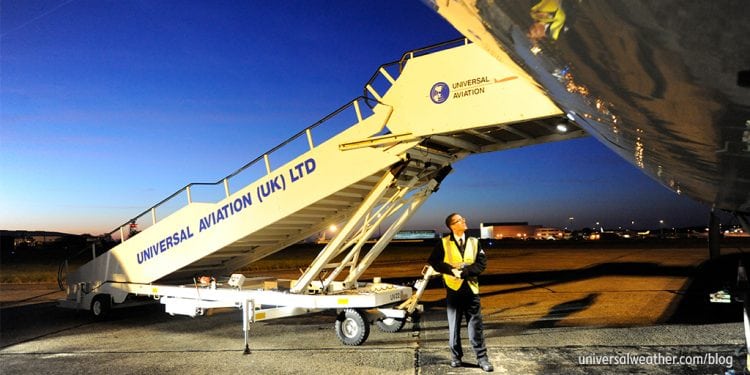Understanding UK Business Aviation Charter Permit Requirements: A Comprehensive Guide

For more information on operating to the UK, visit our destination and regulatory guides:
The processing of charter permits for the United Kingdom falls under the jurisdiction of the UK Civil Aviation Authority (CAA). Operators should be particularly mindful of permit request timelines and revision policies. Additionally, UK authorities have intensified efforts to eliminate “grey” charter flights, which will impact operators who fail to secure proper authorizations for UK operations. Here’s what you need to know to ensure smooth operations in UK airspace.
Charter Landing Permit Basics
All non-UK registered charter (non-scheduled commercial) flights require landing permits without exception. It’s worth noting that aircraft operating on experimental certificates must obtain a separate CAA exemption permit to operate in UK airspace, which follows a different application process than standard charter landing permits.
Navigating Cabotage Restrictions
The United Kingdom strictly prohibits domestic charter operations within its borders, with these restrictions rigorously enforced by Civil Aviation authorities. Currently, only Head of State and official diplomatic flights are considered for domestic operation approvals. For example, a schedule request for KTEB-EGPH-EGSS-LFPB would face restrictions due to the internal UK leg (EGPH-EGSS). In such scenarios, operators have two options: limit their itinerary to a single stop within the UK, or incorporate a technical stop outside UK territory, such as EGPH-EIDW (Ireland)-EGSS.
Understanding Permit Lead Times
The official processing window for charter permits stands at two business days, provided all required documentation is submitted correctly and completely. While the CAA may accommodate shorter-notice requests at their discretion, this is only possible during normal operating hours. The CAA permit office operates Monday through Friday from 0900-1700 local time and remains closed on weekends and bank holidays, with exceptions made only for air ambulance and humanitarian flights.
Documentation Requirements
UK charter permit applications demand substantial documentation, information, and formal statements. Operators must furnish an air operator certificate (AOC), verification of appropriate EU liability insurance, and a declaration confirming no hazardous materials are aboard. Each charter flight to the UK necessitates a separate permit application, as the CAA does not issue blanket charter authorizations. The UK CAA website provides comprehensive details on documentation requirements.
Managing Permit Revisions
Like initial applications, permit revisions officially require two business days to process, assuming all submitted information is accurate. While the CAA often processes revision requests in less time, this remains at their discretion. All permit requests and revisions, including document submissions, must be transmitted via email. The CAA system automatically sends a confirmation response upon receiving requests.
It’s helpful to know that approved permits include a 48-hour flexibility window (both before and after the scheduled time). This means operators can adjust their timing within this window without requesting revisions. Additionally, there’s no requirement to submit updated crew or passenger manifests once a permit has been approved.
Operators also have the convenience of including up to five separate aircraft on a single permit, with the flexibility to operate the route using any one of these listed aircraft.
Handling Short-Notice Changes
Since the CAA permit office closes during evenings, weekends, and bank holidays, certain schedule changes may prove impossible to approve in time. For instance, if you hold an approved permit for Farnborough (EGLF) with Le Bourget (LFPB) as your next destination, but need to change to Geneva (LSGG) over a weekend, this adjustment would be impossible due to CAA office hours and required lead times.
Flight diversions, however, are permitted in specific circumstances. If you’re scheduled to arrive at Northolt (EGWU) but anticipate delays that would result in arrival after the airport’s closure, you may divert to Stansted (EGSS). Similarly, diversions necessitated by adverse weather or technical issues are allowed without permit revisions.
When Revisions Are Required
Permit revisions become necessary for trip changes in the following scenarios:
- When operations extend beyond the permit validity window
- When changing arrival airports within the UK (except for diversions due to closures or weather), or when modifying departure/destination airports before or after UK operations. For example, changing your departure point from Teterboro (KTEB) to White Plains (KHPN) would require a permit revision.
- When changing aircraft, operator name, or any applicable documentation. Notably, modifications to crew and/or passenger manifests do not necessitate permit revisions.
Consequences of Non-Compliance
Operating a schedule not approved by the CAA constitutes an illegal charter operation. The CAA is actively working to eliminate illegal or “grey area” charter activities. For transparency, the CAA publishes all approved charter permits and schedules on their website, accessible to all operators. Permit confirmations are also available to UK Border Force and Safety Assessment of Foreign Aircraft (SAFA) agencies.
If your operation deviates from your approved permit, your flight may be detained or questioned by SAFA. Should the CAA determine that a flight has operated illegally, they have full authority to prosecute the operator under UK law.
Security Protocols
All chartered aircraft departing from UK airfields with a Maximum Take-Off Weight (MTOW) exceeding 10 metric tons and carrying passengers must undergo complete security screening before boarding. Additional details are available through the linked resources.
Final Considerations
It’s essential for operators to remain mindful of CAA operating hours and understand that permit changes cannot be processed outside normal business hours. The only exceptions for obtaining or revising permits outside CAA operating hours apply to air ambulance or humanitarian flights. As the CAA strengthens enforcement of permit requirements, operators must ensure full compliance with established protocols to avoid operational disruptions and potential legal consequences.




